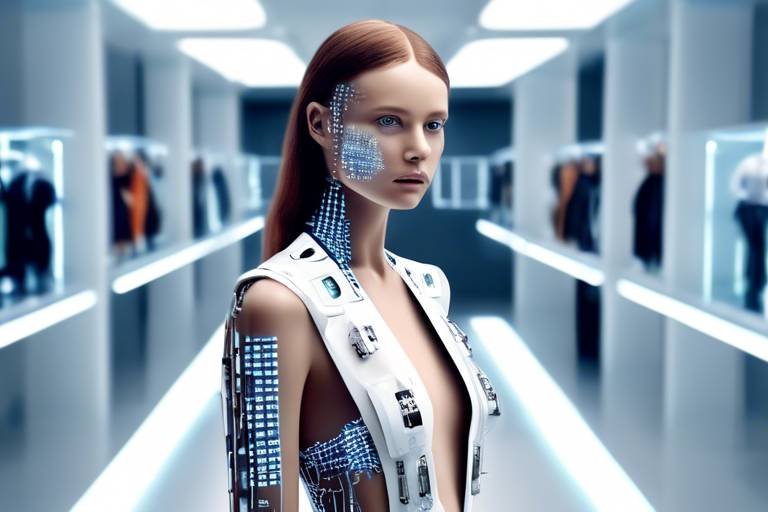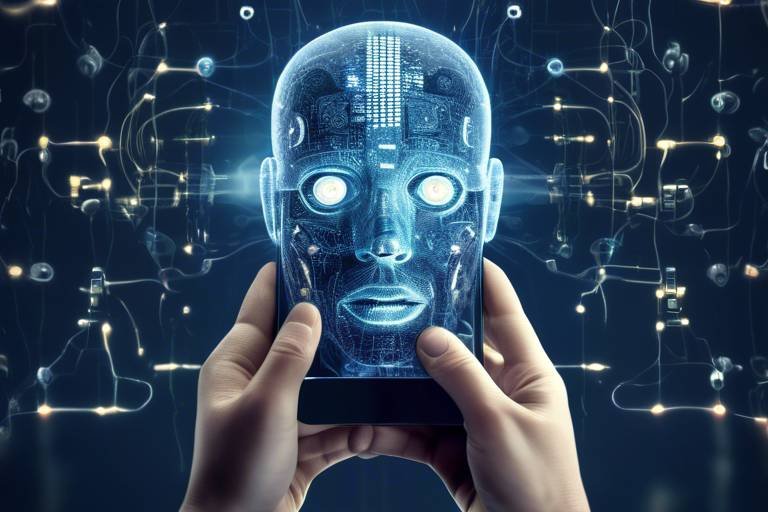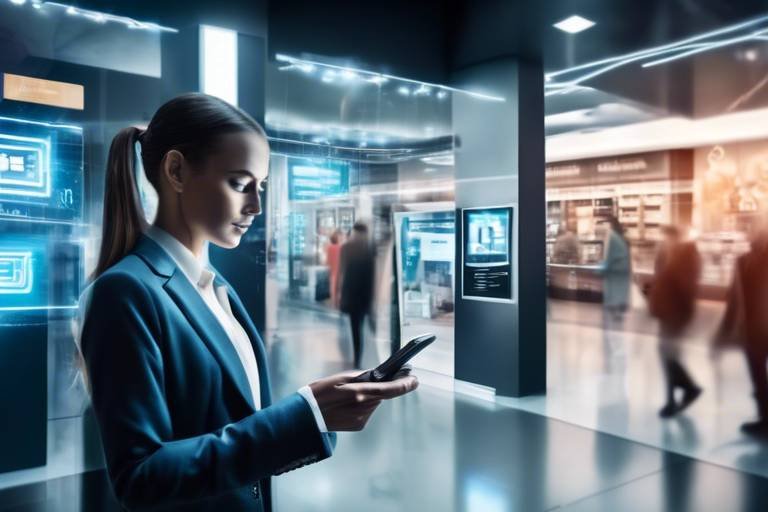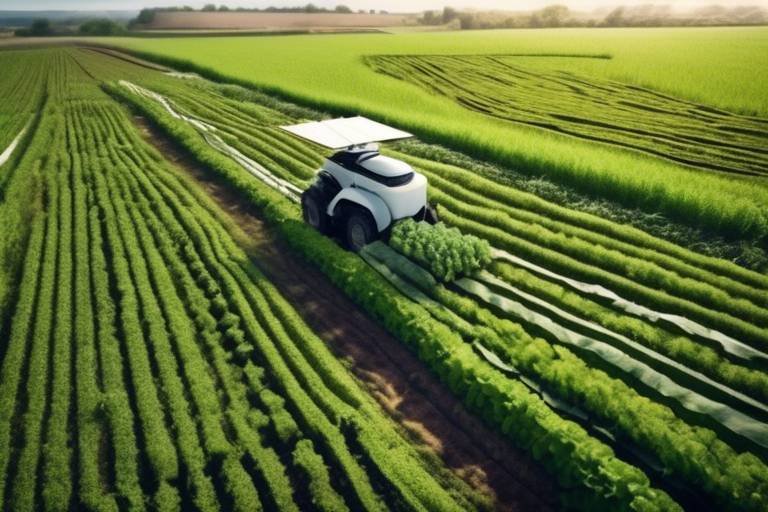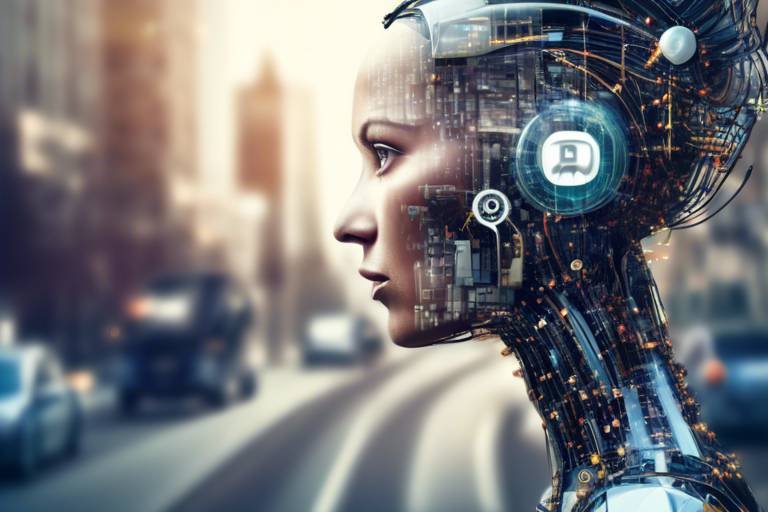The Future of Robotics: AI Innovations Leading the Way
The world is on the brink of a technological revolution, and at the forefront of this change is robotics powered by artificial intelligence (AI). Imagine a future where robots not only assist us but also learn and adapt to our needs, making our lives easier and more efficient. This article explores the latest advancements in robotics driven by AI, examining their implications for various industries and everyday life, as well as the ethical considerations and future challenges they present.
AI technology is rapidly evolving, enabling robots to perform complex tasks with greater efficiency than ever before. From self-learning algorithms to advanced machine vision, these breakthroughs are shaping the future of robotics. For instance, consider how machine learning allows robots to analyze vast amounts of data, identifying patterns and making decisions without human intervention. This not only enhances their operational capabilities but also allows them to operate in unpredictable environments, such as disaster zones or crowded public spaces.
The manufacturing sector is experiencing a revolution due to robotics and AI. Automation is transforming production processes, leading to enhanced productivity and reduced operational costs. Robots are now capable of performing repetitive tasks with precision, significantly reducing the chances of human error. Furthermore, the integration of AI allows for real-time monitoring and adjustments, ensuring that production lines run smoothly and efficiently.
Collaborative robots, or cobots, are designed to work alongside humans, enhancing workplace safety and efficiency. Unlike traditional robots that operate in isolation, cobots can interact with human workers, sharing tasks and responsibilities. This collaboration not only boosts productivity but also fosters a safer working environment. For example, cobots can take over dangerous tasks, allowing humans to focus on more complex and creative aspects of their jobs.
Understanding how humans interact with robots is crucial for successful integration. Effective human-robot collaboration hinges on clear communication and intuitive design. For instance, robots equipped with advanced sensors can gauge human emotions and respond accordingly, creating a more harmonious workplace. This interaction not only improves productivity but also enhances job satisfaction, as workers feel supported by their robotic counterparts.
Training cobots to adapt to various tasks is essential for maximizing their potential. Methods such as reinforcement learning allow robots to learn from experience, improving their performance over time. In dynamic environments, where tasks and conditions frequently change, this adaptability becomes even more critical. By leveraging AI, cobots can quickly adjust to new challenges, ensuring seamless operations across diverse scenarios.
Service robots are becoming increasingly prevalent in sectors such as healthcare and hospitality. These robots perform a variety of tasks, from delivering medications in hospitals to providing customer service in hotels. The benefits they bring to these industries are profound, including increased efficiency, reduced costs, and improved customer satisfaction. In healthcare, for example, robots can assist with patient monitoring, allowing medical professionals to focus on providing quality care.
As robotics technology advances, ethical concerns arise. The integration of AI in robotics raises important questions about accountability, transparency, and the moral implications of machine decision-making. Developers and users must navigate these challenges responsibly, ensuring that the deployment of robotic systems aligns with ethical standards and societal values.
The rise of robotics raises concerns about job displacement. While automation can lead to increased efficiency, it also poses a threat to traditional job roles. However, it's essential to recognize that robotics can also create new opportunities. The key lies in reskilling and upskilling the workforce to adapt to changing job demands. Strategies such as vocational training and educational programs can help mitigate the negative effects of automation on employment.
With increased connectivity, data privacy and security become paramount. As robots collect and process sensitive information, the risk of data breaches and misuse rises. Developers must implement robust security measures to protect this data, ensuring that users' privacy is safeguarded. Regular audits and updates are crucial to maintaining the integrity of robotic systems and building trust with users.
Looking ahead, we explore emerging trends and technologies that will shape the future of robotics. Advancements in AI and machine learning are set to revolutionize various fields, from agriculture to transportation. Imagine autonomous vehicles navigating our streets or drones delivering packages to our doorsteps. The possibilities are endless, and as technology continues to evolve, so too will the capabilities of robotics, fundamentally changing how we live and work.
- What are collaborative robots? Collaborative robots, or cobots, are designed to work alongside humans to enhance productivity and safety in the workplace.
- How does AI improve robot capabilities? AI enables robots to learn from experience, analyze data, and make decisions autonomously, enhancing their efficiency and adaptability.
- What are the ethical concerns surrounding robotics? Ethical concerns include job displacement, data privacy, and the moral implications of machine decision-making.
- How can we mitigate job displacement caused by robotics? Reskilling and upskilling the workforce through training programs can help workers transition to new roles created by automation.
- What is the future of robotics? The future of robotics looks promising, with advancements in AI and machine learning set to revolutionize various industries and everyday life.

Advancements in AI Technology
Artificial Intelligence (AI) technology is experiencing a rapid evolution that is fundamentally transforming the landscape of robotics. With advancements in machine learning, computer vision, and natural language processing, robots are becoming more capable of performing complex tasks that were once thought to be the exclusive domain of humans. Imagine a world where robots can not only execute tasks with precision but also learn from their experiences, adapting to new challenges in real-time. This is not just a futuristic dream; it's today's reality!
One of the most significant breakthroughs in AI technology is the development of deep learning algorithms. These algorithms enable robots to analyze vast amounts of data and make decisions based on patterns they recognize. For instance, a robot equipped with deep learning capabilities can identify objects, navigate through environments, and even understand human emotions. This level of sophistication allows robots to operate in more dynamic and unpredictable settings, significantly expanding their potential applications.
Moreover, the integration of computer vision technologies has given robots the ability to see and interpret their surroundings. This capability is crucial for tasks ranging from autonomous driving to precision agriculture. For example, a robot in a manufacturing plant can use computer vision to detect defects in products, ensuring quality control at an unprecedented scale. This not only enhances efficiency but also reduces waste, contributing to more sustainable production practices.
Natural language processing (NLP) is another key advancement that is paving the way for more intuitive human-robot interactions. With NLP, robots can understand and respond to human speech, making them more user-friendly. Imagine asking a robot to fetch an item or schedule a meeting, and it responds with the right action. This seamless interaction blurs the lines between human and machine, making robots valuable assistants in both personal and professional environments.
As we look to the future, the implications of these advancements are profound. The potential for autonomous robots to revolutionize industries such as healthcare, logistics, and agriculture is immense. In healthcare, for example, robots can assist in surgeries, monitor patients, and even provide companionship to the elderly. In logistics, they can optimize supply chains and enhance delivery systems, making services faster and more efficient.
However, with great power comes great responsibility. As robots become more autonomous and capable, it raises important questions about ethics and accountability. Who is responsible when a robot makes a mistake or causes harm? How do we ensure that these technologies are used for the greater good? These are the challenges we must address as we embrace the future of robotics powered by AI.
In conclusion, the advancements in AI technology are not just shaping the future of robotics; they are redefining what is possible across various industries. As we continue to innovate and explore the capabilities of AI, we must remain vigilant in addressing the ethical implications that accompany these powerful technologies. The journey ahead is exciting, filled with opportunities and challenges that will require our collective wisdom and foresight.
- What are the main advancements in AI technology impacting robotics?
The main advancements include deep learning algorithms, computer vision, and natural language processing, which enhance robots' capabilities to perform complex tasks and interact with humans. - How does AI improve robot efficiency?
AI enables robots to analyze data, learn from experiences, and adapt to new environments, allowing for greater efficiency in various applications. - What ethical considerations arise from the use of AI in robotics?
Ethical considerations include accountability for robot actions, potential job displacement, and the need for safeguards in data privacy and security.

Robotics in Manufacturing
The manufacturing sector is undergoing a **profound transformation** thanks to the integration of robotics and artificial intelligence (AI). This evolution is not just about replacing human labor; it’s about enhancing productivity, improving quality, and driving innovation. Imagine a factory floor where robots work seamlessly alongside humans, performing repetitive tasks with precision while allowing human workers to focus on more complex, creative challenges. This is the future of manufacturing, and it’s already happening.
One of the most significant changes brought on by robotics in manufacturing is the **increase in efficiency**. Robots can operate 24/7 without the need for breaks, leading to higher output rates. According to recent studies, companies that have adopted robotic automation have reported a **30% increase in production efficiency**. This shift is not just beneficial for the bottom line; it also allows businesses to meet the growing demand for customized products without sacrificing quality.
Moreover, the use of robotics in manufacturing has led to the emergence of **collaborative robots**, or cobots, which are designed to work alongside human operators. Unlike traditional industrial robots that are often isolated behind safety barriers, cobots are equipped with advanced sensors and AI capabilities that enable them to safely interact with humans. This collaboration not only enhances safety but also improves the overall workflow. For instance, a cobot can assist in assembling components while a human worker focuses on quality control, creating a more efficient and harmonious work environment.
To illustrate the impact of robotics in manufacturing, let’s take a look at a few key benefits:
- Enhanced Precision: Robots can perform tasks with a level of accuracy that is difficult for humans to match, reducing errors and waste.
- Increased Flexibility: Modern robots can be programmed to handle various tasks, allowing manufacturers to adapt quickly to changing market demands.
- Improved Safety: With robots taking on dangerous tasks, the risk of workplace injuries is significantly reduced.
Additionally, the integration of AI in manufacturing robotics enables machines to learn from their environment and improve their performance over time. This **adaptive learning** means that robots can optimize their operations based on real-time data, leading to even greater efficiency. For example, a robot can analyze its own performance metrics to identify areas for improvement, making adjustments autonomously. This level of intelligence is revolutionizing how manufacturers approach production.
However, the shift towards automation doesn’t come without its challenges. As companies invest in robotic systems, they must also consider the **upskilling of their workforce**. It’s crucial for employees to learn how to work alongside these advanced machines, which means training programs must be implemented to help workers adapt to new technologies. This investment in human capital is essential for ensuring that the benefits of robotics are fully realized.
In conclusion, robotics in manufacturing is not just a trend; it’s a **game-changer** that is reshaping the industry. With the right strategies in place, businesses can leverage these technologies to boost productivity, improve safety, and enhance product quality. The future of manufacturing is bright, and it’s powered by the incredible capabilities of robotics and AI.
Q: How are robots improving efficiency in manufacturing?
A: Robots can operate continuously without breaks, leading to higher output rates and reduced errors, which ultimately boosts efficiency.
Q: What are collaborative robots (cobots)?
A: Cobots are designed to work alongside human workers, enhancing safety and productivity by performing repetitive tasks while humans focus on more complex activities.
Q: What challenges do companies face when implementing robotics?
A: Companies must invest in training their workforce to ensure employees can effectively work alongside robots, which can be a significant challenge during the transition.

Collaborative Robots (Cobots)
Collaborative robots, commonly known as cobots, are revolutionizing the way we think about automation in the workplace. Unlike traditional industrial robots that operate in isolation, cobots are designed to work side by side with human workers, enhancing productivity and safety. Imagine a factory floor where a robot and a human are not just working together, but are actively collaborating to achieve common goals. This synergy is what makes cobots so exciting!
One of the key advantages of cobots is their flexibility. They can be easily programmed to perform a variety of tasks, from assembly to packaging, without the need for extensive reconfiguration. This adaptability allows businesses to respond swiftly to changing production demands, making them an ideal solution for small to medium-sized enterprises that may not have the resources for large-scale automation. The ease of use in programming cobots means that even those without a technical background can manage them effectively, thereby reducing the barrier to entry for many companies.
Moreover, cobots are equipped with advanced sensors and AI-driven algorithms that enable them to perceive their environment and interact safely with human workers. This feature significantly reduces the risk of accidents, creating a safer workplace. For example, if a human comes too close to a cobot, it can automatically slow down or stop, ensuring that no harm comes to the worker. This level of safety is crucial, especially in environments where heavy machinery is in operation.
Another noteworthy aspect of cobots is their potential to enhance job satisfaction. By taking over repetitive and physically demanding tasks, cobots allow human workers to focus on more engaging and intellectually stimulating activities. This can lead to increased job satisfaction and productivity, as employees are able to contribute more creatively to their roles. It's a win-win situation where humans and robots complement each other’s strengths.
In terms of deployment, cobots are cost-effective and can be integrated into existing workflows with minimal disruption. Businesses can start small, implementing a few cobots to test their effectiveness before scaling up. This gradual approach allows for a smoother transition into automation, minimizing the anxiety that often accompanies technological changes.
To sum up, the rise of collaborative robots is not just a trend; it represents a fundamental shift in how we approach work and automation. As industries continue to adopt these innovative machines, we can expect to see significant improvements in efficiency, safety, and employee satisfaction. The future of work is not about robots replacing humans, but rather about humans and robots working together to achieve greater heights.
- What are cobots? Cobots are collaborative robots designed to work alongside humans, enhancing productivity and safety in various tasks.
- How do cobots improve workplace safety? Cobots are equipped with sensors that allow them to detect human presence, enabling them to slow down or stop to prevent accidents.
- Can cobots be easily programmed? Yes, cobots are user-friendly and can be programmed by individuals without a technical background, making them accessible for many businesses.
- What industries benefit from cobots? Cobots are beneficial in a variety of sectors, including manufacturing, healthcare, and logistics, where they assist in tasks ranging from assembly to patient care.

Human-Robot Interaction
Understanding is pivotal for the successful integration of robotics into our daily lives and workplaces. As robots become more sophisticated, their ability to interact with humans in a meaningful way is not just a luxury; it's a necessity. Imagine walking into a factory where machines are not just tools but colleagues, capable of understanding your commands and responding in real time. This is the future we are heading towards, where the synergy between humans and robots enhances productivity and safety.
At the core of effective human-robot interaction lies the concept of communication. Robots must be able to interpret human cues—both verbal and non-verbal—to function efficiently. This involves advanced sensors and AI algorithms that allow robots to recognize gestures, facial expressions, and even tone of voice. For instance, a robot equipped with facial recognition technology can gauge whether a worker is stressed or relaxed, adjusting its actions accordingly. This level of interaction transforms robots from mere machines into responsive partners in various settings.
Moreover, the design of robots plays a significant role in how they are perceived and interacted with by humans. A robot that resembles a human, often referred to as a humanoid robot, can evoke a sense of familiarity and comfort, making it easier for people to work alongside it. On the other hand, more industrial-looking robots may require a different approach to foster trust and collaboration. This leads us to consider the psychological aspects of human-robot interaction, where the design and functionality of robots must align with human expectations and comfort levels.
To further enrich our understanding, let’s explore some key principles that facilitate effective human-robot collaboration:
- Transparency: Robots should be designed to communicate their actions and intentions clearly to human operators. This transparency builds trust and encourages smoother interactions.
- Responsiveness: The ability of robots to react swiftly to human input is crucial. A responsive robot can adapt its behavior based on real-time feedback, enhancing cooperation.
- Safety: Ensuring that robots can operate safely around humans is paramount. This includes implementing fail-safes and designing robots that can predict and avoid potential hazards.
Furthermore, training plays a vital role in enhancing human-robot interaction. Just as we train humans to work with machinery, we must also train robots to understand human behaviors and expectations. This involves using machine learning techniques that allow robots to learn from their interactions with humans, improving their performance over time. A well-trained robot can become an invaluable asset, capable of not only performing tasks but also anticipating the needs of its human coworkers.
In conclusion, the future of human-robot interaction is bright and full of potential. As we continue to innovate and refine our approaches, the possibilities for collaboration between humans and robots are limitless. By prioritizing communication, design, and training, we can create a harmonious environment where both humans and robots thrive together.

Training and Adaptability
In the rapidly evolving world of robotics, are two critical components that determine a robot's effectiveness in various environments. As we push the boundaries of what robots can do, it's essential to ensure they can learn and adapt to new tasks seamlessly. This is not just a matter of programming; it's about creating systems that can evolve alongside the demands of their environments.
Imagine a factory floor where robots are tasked with assembling products. If a new product line is introduced, these robots must quickly learn how to handle different components and assembly techniques. This is where advanced machine learning algorithms come into play. By utilizing techniques like reinforcement learning, robots can be trained through trial and error, refining their skills as they receive feedback from their performance. This method not only accelerates the learning process but also enhances the robot's ability to adapt to unforeseen challenges.
Moreover, the use of simulation environments allows robots to practice their tasks in a risk-free setting. These virtual spaces enable engineers to test various scenarios and refine the robot's programming before deploying it in real-world applications. For instance, a service robot in a hotel can be trained to navigate through different layouts and customer interactions without the fear of making mistakes that could lead to negative experiences.
To further enhance adaptability, many robots are now equipped with sensor technology that allows them to perceive their surroundings. This sensory input is crucial for making real-time adjustments to their actions. For example, a robotic vacuum cleaner uses sensors to detect obstacles and change its path accordingly. This ability to respond to dynamic environments is what sets modern robots apart from their predecessors.
In addition to technical advancements, the concept of human-robot collaboration plays a significant role in training and adaptability. As robots work alongside humans, they can learn from human behavior and decision-making processes. This symbiotic relationship not only improves the robot's functionality but also enhances workplace safety and efficiency. By observing and mimicking human actions, robots can quickly adapt to new tasks and environments, making them invaluable team members.
In summary, the future of robotics hinges on effective training and adaptability. As we continue to innovate and integrate AI into robotic systems, we can expect to see machines that are not only more capable but also more intuitive in their interactions with the world around them. The potential applications are vast, ranging from manufacturing to healthcare, and the implications for productivity and efficiency are monumental.
- What is the importance of training in robotics? Training is essential for robots to learn how to perform tasks efficiently and adapt to changing environments.
- How does machine learning enhance robot adaptability? Machine learning allows robots to learn from their experiences and improve their performance over time, enabling them to handle new tasks with ease.
- Can robots learn from human interactions? Yes, robots can observe and mimic human behavior, which helps them adapt to various tasks in collaborative settings.
- What role do sensors play in robotic adaptability? Sensors provide robots with real-time information about their surroundings, allowing them to make adjustments and navigate effectively.

AI in Service Robotics
The rise of is nothing short of revolutionary. These robots are not just mechanical entities; they are becoming integral parts of our everyday lives, particularly in sectors like healthcare, hospitality, and retail. Imagine a world where robots assist in surgeries, deliver food to your table, or even guide you through a store. It’s not science fiction anymore; it’s happening right now!
In the healthcare industry, for instance, service robots are transforming patient care. They can assist with routine tasks such as taking vital signs or delivering medications, allowing healthcare professionals to focus more on patient interaction and less on administrative duties. This leads to a more efficient healthcare system and improves patient outcomes. AI-driven robots are capable of learning from their interactions, adapting to the specific needs of patients, and even providing companionship to those who are isolated.
Similarly, in the hospitality sector, robots are changing the game. Picture this: you arrive at a hotel, and a friendly robot greets you at the front desk, checks you in, and even carries your luggage to your room. These robots are not just for show; they are designed to enhance the guest experience by providing quick and efficient service. With AI technology, these robots can understand and respond to guest requests, making them feel more at home.
Furthermore, the retail industry is also embracing service robotics. Robots can help customers find products, manage inventory, and even handle checkout processes. This not only improves the shopping experience but also streamlines operations for businesses. According to a recent study, implementing service robots in retail can increase customer satisfaction by up to 30% and reduce operational costs significantly.
However, the integration of AI in service robotics is not without its challenges. There are concerns regarding job displacement and the need for humans to adapt to working alongside these intelligent machines. As businesses increasingly rely on robots for service roles, it is crucial to find a balance that allows for both human and robotic contributions. Training and upskilling the workforce will be essential to ensure that employees can work alongside these new technologies effectively.
As we look to the future, the potential applications of AI in service robotics seem limitless. From personal assistants that help with daily tasks to robots that can provide emergency support during disasters, the possibilities are exciting. The key will be to harness these advancements responsibly, ensuring that they enhance human experiences rather than replace them.
- What are service robots? Service robots are designed to assist humans in various tasks, ranging from healthcare to hospitality.
- How does AI improve service robots? AI enables service robots to learn from their environments, adapt to different tasks, and interact more naturally with humans.
- Will service robots take away jobs? While they may automate certain tasks, they also create new job opportunities in robot maintenance, programming, and more.
- What industries are using service robots? Service robots are being utilized in healthcare, hospitality, retail, and even education.

Ethical Considerations in Robotics
The rapid advancement of robotics and AI technology has sparked a crucial conversation about the ethical considerations that accompany these innovations. As robots become more integrated into our daily lives and various industries, we must address the moral implications of their use. This involves not only understanding the potential benefits but also recognizing the responsibilities that come with deploying such powerful technologies. For instance, how do we ensure that robots are designed to serve humanity rather than replace it? What safeguards are in place to protect our privacy and security? These questions are at the forefront of discussions surrounding robotics.
One of the primary ethical concerns revolves around job displacement. As robots become capable of performing tasks previously done by humans, there is a legitimate fear that many jobs could be lost. The manufacturing sector has already seen significant changes, with robots taking over repetitive tasks. While this increases efficiency, it raises the question: what happens to the workforce? Companies and governments must work together to create strategies that not only embrace automation but also provide retraining and support for displaced workers. This might include developing programs that help individuals learn new skills that are in demand in an increasingly automated job market.
Another critical issue is data privacy and security. As robots become more interconnected and reliant on data, the potential for breaches and misuse of personal information increases. Consider a healthcare robot that collects sensitive patient data; what measures are in place to ensure that this information is protected? Developers must prioritize the creation of secure systems that safeguard user data and maintain trust. This involves implementing robust encryption methods and establishing clear guidelines on data usage.
Moreover, the question of accountability arises when robots make decisions that impact human lives. For example, if a self-driving car is involved in an accident, who is held responsible? The manufacturer, the software developer, or the owner? Establishing a framework for accountability is essential to navigate these complex scenarios. It requires collaboration between technologists, ethicists, and legal experts to create regulations that address these challenges proactively.
In light of these considerations, it is essential to foster a culture of ethical awareness among developers and users of robotics. This can be achieved through education and open dialogues about the implications of AI and robotics. By emphasizing the importance of ethical practices, we can ensure that technology serves humanity's best interests and contributes positively to society.
- What are the main ethical concerns regarding robotics? The main concerns include job displacement, data privacy, security, and accountability in decision-making.
- How can we mitigate job displacement caused by robotics? Strategies include retraining programs, education in new skills, and creating new job opportunities in tech-related fields.
- Who is responsible if a robot causes harm? Accountability can be complex and may involve manufacturers, software developers, or users, depending on the circumstances.
- How can we ensure data privacy in robotics? Implementing robust security measures and clear data usage guidelines are essential for protecting sensitive information.

Job Displacement Concerns
The advent of robotics and artificial intelligence (AI) is undeniably exciting, but it also stirs a pot of anxiety regarding job displacement. As robots become more capable of performing tasks traditionally done by humans, many workers find themselves questioning their future. Will robots take over our jobs? Will there be a place for human workers in an increasingly automated world? These questions are not just hypothetical; they are pressing concerns that society must address.
To understand the impact of robotics on employment, it's essential to recognize that the landscape of work is constantly evolving. Historically, technological advancements have led to the creation of new jobs even as they rendered others obsolete. For instance, the rise of computers in the workplace has transformed roles in industries like banking and retail. In the same vein, while robotics may displace certain manual jobs, they can also pave the way for new opportunities in sectors that require human oversight, creativity, and emotional intelligence.
However, the transition isn't always smooth. Many workers, especially those in low-skill positions, may find it challenging to adapt to new technological demands. According to research, the sectors most vulnerable to job displacement due to automation include:
| Industry | Percentage of Jobs at Risk |
|---|---|
| Manufacturing | 60% |
| Transportation | 50% |
| Retail | 40% |
| Food Service | 30% |
This table illustrates that while some industries face significant risks, others may benefit from the integration of robotics. The key lies in how society responds to these challenges. Upskilling and reskilling the workforce will be crucial in ensuring that workers can transition into new roles that robotics create. Educational programs and vocational training can help equip individuals with the necessary skills to thrive in a tech-driven job market.
Moreover, it's vital for policymakers and businesses to collaborate in developing strategies that mitigate the adverse effects of job displacement. This could include implementing universal basic income (UBI) programs, fostering job creation in emerging sectors, and ensuring that displaced workers receive support during their transition. After all, the goal should be to create a future where humans and robots coexist harmoniously, enhancing productivity while preserving jobs that require human touch and creativity.
As we navigate this complex landscape, it's essential to foster open dialogues about the implications of robotics on employment. By addressing these concerns head-on and proactively preparing for the changes ahead, we can harness the potential of robotics to not only improve efficiency but also create a more equitable future for all workers.
- Will robots really take over all jobs? No, while robots will automate certain tasks, many jobs will still require human skills such as creativity, empathy, and critical thinking.
- What can I do to prepare for changes in the job market? Upskilling and reskilling through education and training programs can help you adapt to the evolving job landscape.
- How can society support workers affected by automation? Policymakers can implement strategies such as universal basic income and job transition programs to assist displaced workers.

Data Privacy and Security
As we delve deeper into the world of robotics, one critical aspect that cannot be overlooked is . With robots increasingly integrated into our daily lives and industries, they collect vast amounts of data. This data can range from personal information to sensitive operational details, making it a potential goldmine for cybercriminals. The challenge lies in ensuring that this information is safeguarded against unauthorized access and misuse.
In the realm of robotics, the connectivity of devices leads to an expanded attack surface, where vulnerabilities can be exploited. For instance, imagine a healthcare robot that stores patient data; if hacked, this information could lead to severe consequences, including identity theft or unauthorized medical procedures. Therefore, developers and manufacturers must prioritize security measures to protect user data.
To address these concerns, several strategies can be employed:
- Encryption: Ensuring that data is encrypted both in transit and at rest can significantly reduce the risk of interception.
- Regular Security Audits: Conducting frequent assessments of robotic systems can help identify and rectify vulnerabilities before they are exploited.
- User Education: Informing users about best practices in data security can empower them to protect their information actively.
Moreover, regulations such as the General Data Protection Regulation (GDPR) in Europe set a framework for data handling practices. Companies need to comply with these regulations, ensuring that they collect only the necessary data and that users are informed about how their information will be used. This not only builds trust with users but also minimizes the risk of legal repercussions.
As technology advances, the integration of artificial intelligence in robotics will further complicate the landscape of data privacy. AI systems learn from data, which means they require access to extensive datasets to function effectively. This raises the question: how can we balance the benefits of AI with the need for privacy? The answer lies in developing robust frameworks that prioritize ethical data usage while still harnessing the power of AI.
In conclusion, the intersection of robotics and data privacy is a complex yet vital area that demands ongoing attention. As we embrace the future of robotics, it is imperative that we remain vigilant about the security of the data these systems handle. By implementing strong security measures and adhering to ethical standards, we can ensure that the benefits of robotics are realized without compromising our privacy.
- What are the main risks associated with robotics and data privacy? The main risks include unauthorized access to sensitive data, data breaches, and misuse of personal information.
- How can companies protect user data in robotic systems? Companies can implement encryption, conduct regular security audits, and educate users about best practices in data security.
- What regulations exist to protect data privacy in robotics? Regulations like the GDPR provide guidelines on how companies should handle personal data, ensuring transparency and user consent.
- Is AI a threat to data privacy? AI can pose risks to data privacy if not managed properly, but it can also enhance security measures through advanced threat detection.

The Future Landscape of Robotics
The future of robotics is not just a distant dream; it's a rapidly approaching reality that promises to reshape our world in ways we can hardly imagine. With the continuous advancements in artificial intelligence and machine learning, robots are becoming more capable, intelligent, and integrated into our daily lives. Imagine a world where robots not only assist in mundane tasks but also enhance our creativity and problem-solving abilities. This is the exciting frontier we are venturing into, and it holds immense potential across various industries.
One of the most significant trends shaping the future of robotics is the rise of autonomous systems. These robots are designed to operate independently, making decisions based on real-time data and learning from their environments. From self-driving cars to drones delivering packages, the implications of autonomous robotics are profound. They promise to revolutionize transportation, logistics, and even emergency response, providing solutions that are faster and often more efficient than human capabilities.
Moreover, the integration of robotics with the Internet of Things (IoT) is creating a network of interconnected devices that can communicate and collaborate seamlessly. This interconnectedness allows for smarter homes and cities, where robots can manage everything from energy consumption to security systems. As we embrace this technology, we are likely to see an increase in smart robotics that can adapt to their surroundings, learning from user interactions and environmental changes.
Furthermore, advancements in biomimetics—the design and production of materials, structures, and systems inspired by nature—are leading to the creation of robots that mimic the efficiency and adaptability of living organisms. For instance, researchers are developing robots that can navigate difficult terrains like insects, or even swim like fish. These innovations not only enhance the robots' functionality but also broaden their applications in fields such as search and rescue, environmental monitoring, and agriculture.
As we look ahead, it's essential to consider the ethical implications of these advancements. The rapid pace of innovation raises questions about the responsibilities of developers and the potential impact on society. For example, how do we ensure that autonomous robots make ethical decisions? What frameworks need to be established to protect privacy and data security? Addressing these concerns will be crucial to fostering public trust and acceptance of robotic technologies.
In summary, the future landscape of robotics is vibrant and full of possibilities. From autonomous systems and IoT integration to biomimetic designs, the advancements we are witnessing today are just the tip of the iceberg. As we continue to innovate, it is vital to remain aware of the ethical considerations that accompany these technologies. By doing so, we can harness the power of robotics to improve our lives, enhance productivity, and tackle some of the most pressing challenges we face as a society.
- What role will AI play in the future of robotics?
AI will enable robots to learn from their environments, make decisions, and perform complex tasks autonomously, significantly enhancing their capabilities. - How will robotics affect job markets?
While robotics may displace certain jobs, they will also create new opportunities in tech development, maintenance, and oversight, necessitating a shift in workforce skills. - What are the ethical concerns surrounding robotics?
Concerns include job displacement, data privacy, and the need for ethical frameworks to guide the development and deployment of autonomous systems.
Frequently Asked Questions
- What are the latest advancements in AI technology for robotics?
AI technology is evolving at a breakneck speed, enabling robots to tackle increasingly complex tasks. Innovations such as deep learning, computer vision, and natural language processing are allowing robots to not only perform repetitive tasks but also understand and interact with their environments more intelligently. This means robots can adapt to new challenges and learn from their experiences, significantly enhancing their efficiency and effectiveness in various applications.
- How are robots transforming the manufacturing industry?
The manufacturing sector is undergoing a remarkable transformation thanks to robotics and AI. Automation is streamlining production processes, reducing human error, and accelerating output. With the introduction of collaborative robots, or cobots, manufacturers can enhance productivity while ensuring a safer work environment. These robots work alongside humans, allowing for a more flexible and efficient production line.
- What are collaborative robots (cobots) and their benefits?
Collaborative robots, or cobots, are designed to work hand-in-hand with human workers. Unlike traditional industrial robots that operate in isolation, cobots are built to assist and enhance human capabilities. They improve safety by taking on dangerous tasks and can be easily trained to adapt to various roles. This synergy not only boosts productivity but also creates a more harmonious workplace where humans and robots can thrive together.
- What role do service robots play in industries like healthcare?
Service robots are becoming indispensable in sectors such as healthcare and hospitality. In healthcare, they assist with tasks ranging from patient monitoring to medication delivery, freeing up medical staff to focus on patient care. In hospitality, robots can enhance customer service by providing information and assistance, leading to a more streamlined experience for guests. Their ability to operate autonomously allows for greater efficiency and improved service quality.
- What ethical considerations arise with the rise of robotics?
As robotics technology advances, several ethical concerns come to the forefront. Issues like job displacement, data privacy, and the moral implications of AI decision-making need to be addressed. Developers and users must consider the potential impacts of robotics on society, ensuring that the benefits of automation do not come at the expense of human dignity and employment opportunities.
- How can we address job displacement caused by robotics?
Job displacement is a significant concern as automation becomes more prevalent. To mitigate negative effects, it's crucial to focus on retraining and upskilling the workforce. By providing education and training programs, workers can transition into new roles that require human creativity and emotional intelligence—qualities that robots cannot replicate. Additionally, creating new job opportunities in tech and robotics can help offset losses in traditional roles.
- What measures can be taken to ensure data privacy and security in robotic systems?
With the increasing connectivity of robotic systems, data privacy and security are paramount. Implementing robust cybersecurity protocols, conducting regular audits, and ensuring compliance with data protection regulations are essential steps. Developers must prioritize encryption and access controls to safeguard sensitive information, while users should remain vigilant about how their data is collected and used.
- What does the future hold for robotics and AI?
The future of robotics and AI is incredibly promising, with emerging trends like machine learning and advanced human-robot interaction set to revolutionize various fields. We can expect to see robots that are not only smarter but also more capable of performing tasks in unpredictable environments. As technology continues to evolve, the integration of robotics into everyday life will become increasingly seamless, enhancing our capabilities and improving our quality of life.







